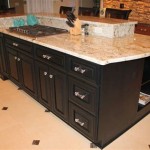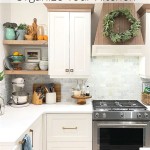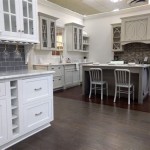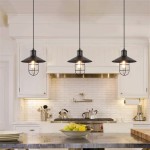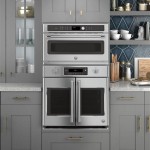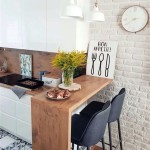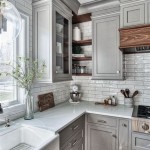How To Add A Pantry To A Kitchen
Adding a pantry can significantly improve a kitchen's functionality and organization. A well-designed pantry provides ample storage space for food items, cookware, and small appliances, freeing up valuable counter and cabinet space. This article explores various pantry addition options, offering guidance on planning, design, and implementation.
Assessing Kitchen Space and Needs
Before embarking on a pantry project, careful assessment of the existing kitchen layout and storage needs is crucial. This assessment involves measuring available space, considering traffic flow patterns, and identifying current storage deficiencies. Examine the types of items typically stored in the kitchen to determine the required pantry size and configuration. Consider factors like family size, cooking habits, and grocery shopping frequency. A detailed inventory of kitchen items can provide valuable insights for optimal pantry design.
Exploring Pantry Options
Several pantry options exist, each with advantages and disadvantages. Choosing the right option depends on the available space, budget, and desired functionality. Common pantry types include:
Built-in pantries: These pantries are integrated into the kitchen's existing structure, typically within a wall cavity or utilizing unused corner space. Built-in pantries offer a seamless and customized look, maximizing space utilization. However, they require more extensive construction and may be more costly.
Freestanding pantries: These units offer flexibility and are readily available in various sizes and styles. Freestanding pantries can be easily moved if needed and often require less installation than built-in options. They are generally less expensive than built-in pantries. However, they may occupy more floor space than integrated solutions.
Retrofitted pantries: These pantries involve converting existing spaces, such as closets or unused areas adjacent to the kitchen, into pantry storage. Retrofitted pantries can be a cost-effective solution, utilizing existing infrastructure. However, they may require modifications to doorways or walls.
Walk-in pantries: These larger pantries provide ample storage and organizational possibilities. Walk-in pantries are ideal for larger kitchens and families with extensive storage needs. They can include features like shelving, drawers, and dedicated appliance storage. However, they require significant space and may not be feasible in smaller kitchens.
Reach-in pantries: These pantries typically utilize a shallow space within the kitchen, offering convenient access to frequently used items. Reach-in pantries are suitable for smaller kitchens or as supplemental storage. They maximize vertical space with adjustable shelving. However, they may offer limited storage capacity compared to larger options.
Pantry Design and Organization
Effective pantry design optimizes storage capacity and accessibility. Careful consideration should be given to shelf placement, door configuration, and interior organization. Adjustable shelving allows for customization based on stored items' varying sizes. Deep shelves can accommodate larger items, while shallow shelves prevent items from getting lost in the back. Drawers provide convenient access to smaller items and can help organize spices and baking supplies. Pull-out shelves or baskets maximize space utilization and offer easy access to items stored in the back of deep shelves.
Lighting and Ventilation
Proper lighting and ventilation are essential components of a well-designed pantry. Adequate lighting ensures visibility, making it easy to locate items. Consider installing LED lighting fixtures inside the pantry for energy efficiency and brightness. Proper ventilation prevents moisture buildup and helps maintain a consistent temperature, preserving stored food items. Adding a small vent or exhaust fan can improve air circulation and prevent spoilage.
Door Styles and Hardware
Pantry doors contribute to the overall aesthetic and functionality of the kitchen. Several door styles are available, including hinged doors, sliding doors, and bi-fold doors. Hinged doors are a traditional choice, offering easy access to the entire pantry. Sliding doors save space and are ideal for narrow areas. Bi-fold doors are a good compromise between hinged and sliding doors, offering wider access than sliding doors while requiring less clearance than hinged doors. Choose hardware that complements the kitchen's existing style and ensures smooth operation.
Material Selection
The selection of materials for pantry construction impacts durability and aesthetics. Common pantry materials include wood, melamine, and metal. Wood offers a classic look and can be painted or stained to match the kitchen cabinets. Melamine is a cost-effective and durable option, resistant to scratches and moisture. Metal shelving provides a sleek and modern look and is easy to clean. Consider the kitchen's existing design and choose materials that complement the overall style.

Add Space Convenience With A Simple Diy Pantry

How To Design The Perfect Kitchen Pantry

Before You Add A Pantry Note These 15 Design Tips

Simple Pantry Wall Cabinet Ideas To Make The Most Out Of Any Space Block Guides

How To Design Your Dream Pantry Even If You Re Short On Space

Add The Perfect Walk In Pantry To Your Kitchen Mission And Bath

How To Organize A Pantry Best Organizers For Kitchen Storage Of 2025 Hgtv

20 Walk In Pantry Ideas For Stylish Kitchen Storage

12 Small Pantry Ideas To Make The Most Out Of Tight Spaces Architectural Digest
.jpg?strip=all)
8 Pantry Design Ideas For Your New Kitchen The Company

